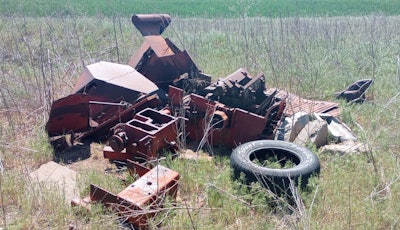
It’s not a good idea to keep old materials on the farm just because they might come in handy someday or because it seems like too much trouble to haul them off. This is especially true if you are trying to protect your poultry from highly pathogenic avian influenza (HPAI).
Jason Gilsdorf, of the United States Department of Agriculture (USDA) Animal and Plant Health Inspection Service (APHIS) Wildlife Services (WS), said keeping excess stuff on your farm such as old building materials, old implements or equipment, or even unused wagons, can be a habitat for wildlife. This is especially true if these things are in piles that have nooks and crannies where wildlife can hide.
As APHIS continues to confirm cases of HPAI in more and more species of wild birds and predatory mammals, these stockpiles of stuff that are so inviting to wild animals very well could be attracting wild animals that are carrying the H5N1 virus and giving them a place “to hang out,” Gilsdorf said.
Gilsdorf, who spoke during the 2024 PEAK conference in Minneapolis, Minnesota, is one of numerous specialists working with poultry producers in Minnesota, Iowa, North Dakota and South Dakota on a project where they provide wildlife biosecurity assessments and mitigation strategies.
“What we’re trying to do is keep wildlife away from these facilities, so if we see these kind of things on the farm, if possible (get rid of them) because it can provide shelter for the wildlife,” Gilsdorf said.
And while Gilsdorf said WS has so far only worked with poultry farmers, he said these same principles apply for dairy farmers wishing to protect their cattle from an H5N1 infection.
To learn more about HPAI cases in commercial poultry flocks in the United States, Mexico and Canada, see an interactive map on WATTPoultry.com.
View our continuing coverage of the global avian influenza situation.


















